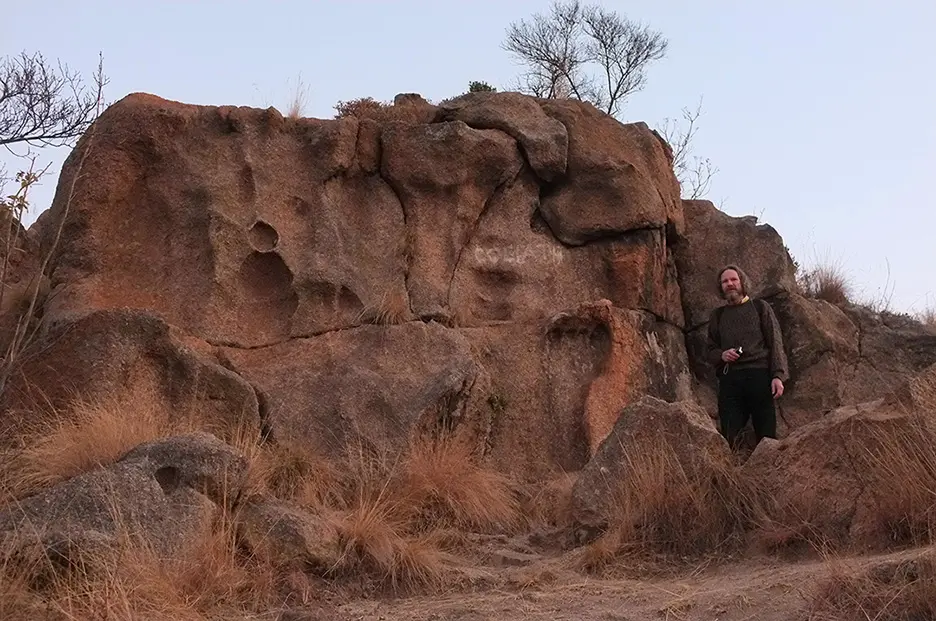South Africa’s 200-Million-Year-Old Footprint: Giant Step
Could a race of giant aliens have lived on Earth hundreds of millions of years ago? Evidence from around the world seems to suggest so, indicating that giants did indeed exist. One of the most compelling pieces of evidence might be the giant footprint in South Africa, which many believe could belong to an extraterrestrial being.

Legends about giants have existed on earth for a long time.
A surprising discovery
.webp)
Close-up of giant footprints discovered in South Africa.
In 1912, a hunter named Stoffel Coetzee discovered a huge footprint about 1.5 metres long in a granite rock while hunting in a remote area of South Africa. This area, then known as the Eastern Transvaal, is now Mpaluzi, near the border with Swaziland. The footprint has astonished geologists and researchers for its size and excellent state of preservation.
Expert opinions
According to Professor Pieter Wagener of Nelson Mandela University in Port Elizabeth, South Africa, this footprint is more likely to be evidence of “little green men from space” than the result of natural erosion. Professor Wagener, along with many other scientists, believes the footprint could be between 200 million and 3 billion years old, based on current knowledge of the formation of granite throughout Earth’s history.

Michael Tellinger shows what could be one of the best pieces of evidence that there were giants on Earth long, long ago. At about 4 feet long, the person who would have left this footprint must have been about 24 feet or 7.5 meters tall. This site presents us with a real dilemma and a deep mystery that needs to be solved. © Image credit: YouTube
South African scientist and explorer Michael Tellinger, nicknamed the “Indiana Jones of South Africa,” has presented this footprint as evidence of the existence of giants on Earth. Tellinger believes that this footprint is one of the strongest pieces of evidence indicating that giants once roamed our planet.

Many people have come here to photograph the giant footprints.
Mystery and controversy
The granite footprint has sparked significant debate in the scientific community. Some geologists suggest it could be a natural erosion feature, but given its size and distinctive shape, others believe it is evidence of giant extraterrestrial beings.

General image of Robert Schoch standing near the strange granite impression that has been controversially interpreted as a giant footprint. Robert Milton Schoch is an American associate professor of Natural Sciences at the School of General Studies at Boston University. Schoch co-authored and expanded the hypothesis of water erosion of the Sphinx since 1990. © Image credit: R. Schoch and C. Ulissey.
This has led to various theories about the origin of the footprint. Some suggest it could belong to Titanoboa, an extinct giant snake, while others believe it is evidence of an extraterrestrial race that once lived on Earth.
Further exploration

Panorama of the place with strange giant footprints.
The site where the footprint was discovered, the Mpuluzi Batholith, is characterized by its coarse porphyritic granite, which is approximately 3.1 billion years old. This adds to the mystery and underlines the need for precise scientific research to answer questions about the origin and meaning of this footprint.
The giant footprint in South Africa remains an unsolved mystery, generating much debate and numerous theories within the scientific community. Regardless of its origin, this footprint is an important part of the exploration of Earth’s history and evolution, and could serve as evidence of giant extraterrestrial beings in the distant past. Further research and exploration is essential to better understand these mysteries and their role in Earth’s history.






